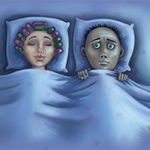ATLANTA—Cognitive-behavioral therapy (CBT) can be highly effective for reducing disability and depressive symptoms in patients with juvenile fibromyalgia (JFM), according to recent research. But experts on the syndrome say that progress in treating JFM has been hindered by clinicians’ reluctance to diagnose it.
“It’s important that, if we strongly feel they have fibromyalgia, to give them the diagnosis,” said Tracy Ting, MD, MSc, assistant professor of pediatrics at Cincinnati Children’s Hospital, in a session, “Juvenile Fibromyalgia,” here at the 2010 ACR/ ARHP Annual Scientific Meeting. [Editor’s note: This session was recorded and is available via ACR SessionSelect at www.rheumatology.org.] “It’s a good stepping point which they can take back to their schools, talk to their friends and their family who are also questioning what’s going on with them.”
JFM is a chronic noninflammatory musculoskeletal pain condition characterized by widespread pain, and multiple tender points, according to the session’s other presenter, Susmita Kashikar-Zuck, PhD, director of the of the pediatric pain research program at Cincinnati Children’s. It primarily affects adolescent girls. The dilemma for physicians is that patients often present with symptoms that have lasted several months, having consulted several specialists who have found no explanatory cause. Diagnostic tests are usually unremarkable and clinical symptoms are often vague and diffuse. As a result, anxious families frequently shuttle between specialists and their pediatrician without a resolution.
But evidence is building that JFM has physiological underpinnings, Dr. Kashikar-Zuck said. Meanwhile, there are more signs that treatment is effective, further underlining the importance of making a diagnosis.
Lives Turned Upside Down
At least half of Dr. Ting’s JFM patients have had their “lives turned upside down” by some insult, she says, whether it is an illness such as mononucleosis or an injury. The incident sets them up for a vicious cycle of pain, poor sleep, and fatigue.
The exact etiology of JFM is unknown, Dr. Ting said. But fibromyalgia is related to a disordered pain regulatory process. An unpleasant or noxious stimulus that would produce only mild or momentary discomfort in a normal subject can be experienced as intensely painful by someone with fibromyalgia, providing the basis of months or years of pain. One theory behind JFM is that the “pain gate” surrounding the nociceptor fibers in the spinal cord opens in response even to mild stimulation such as pressure. New research using functional magnetic resonance imaging shows that fibromyalgia patients experience pain differently than controls. However, other factors appear to amplify pain perceptions and contribute to the condition. Genetics appears to play a role in pathogenesis, as do mediators such as the presence of Substance P, environmental factors such as stress or anxiety, and psychological factors such as anxiety or depression.
